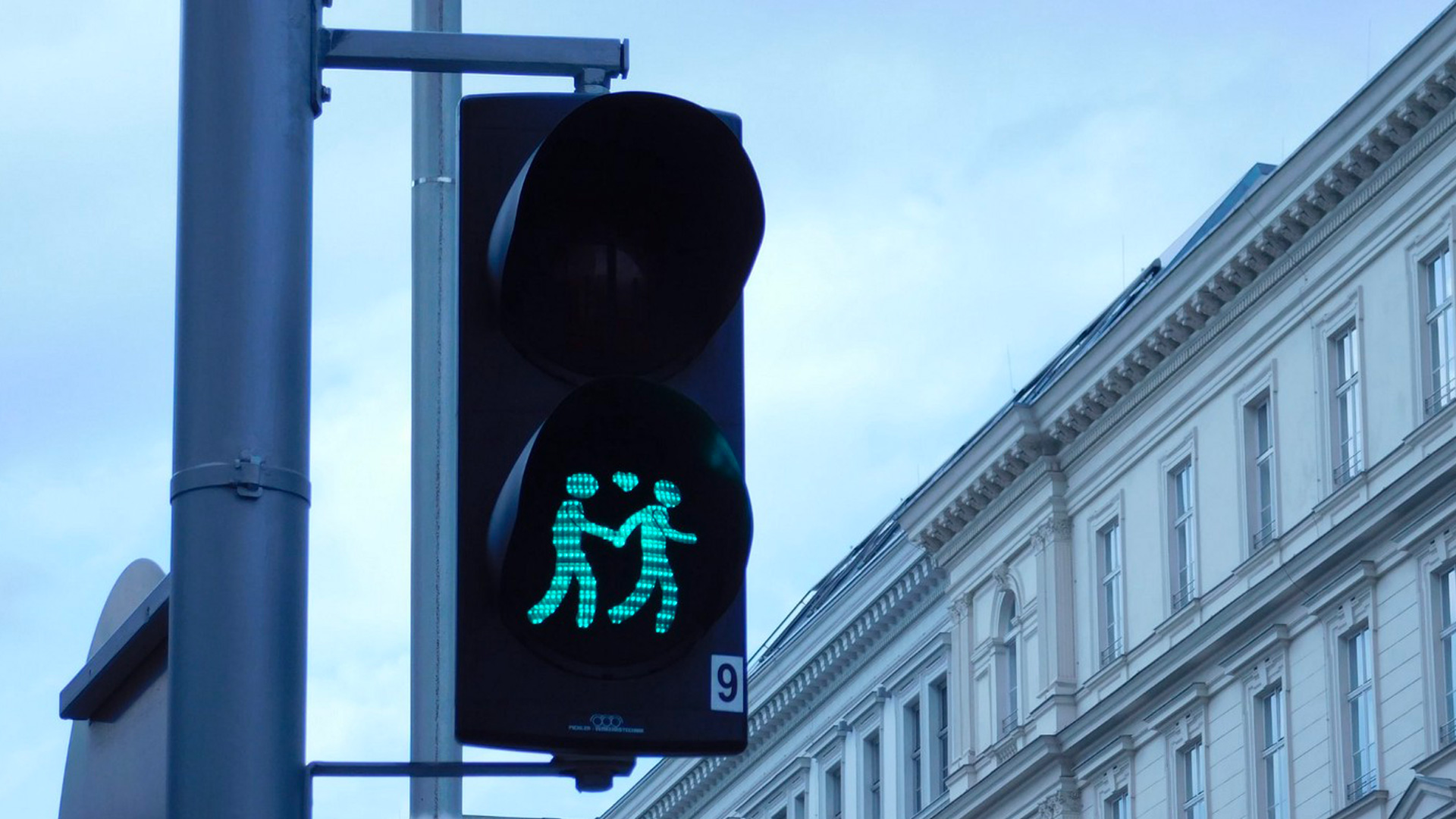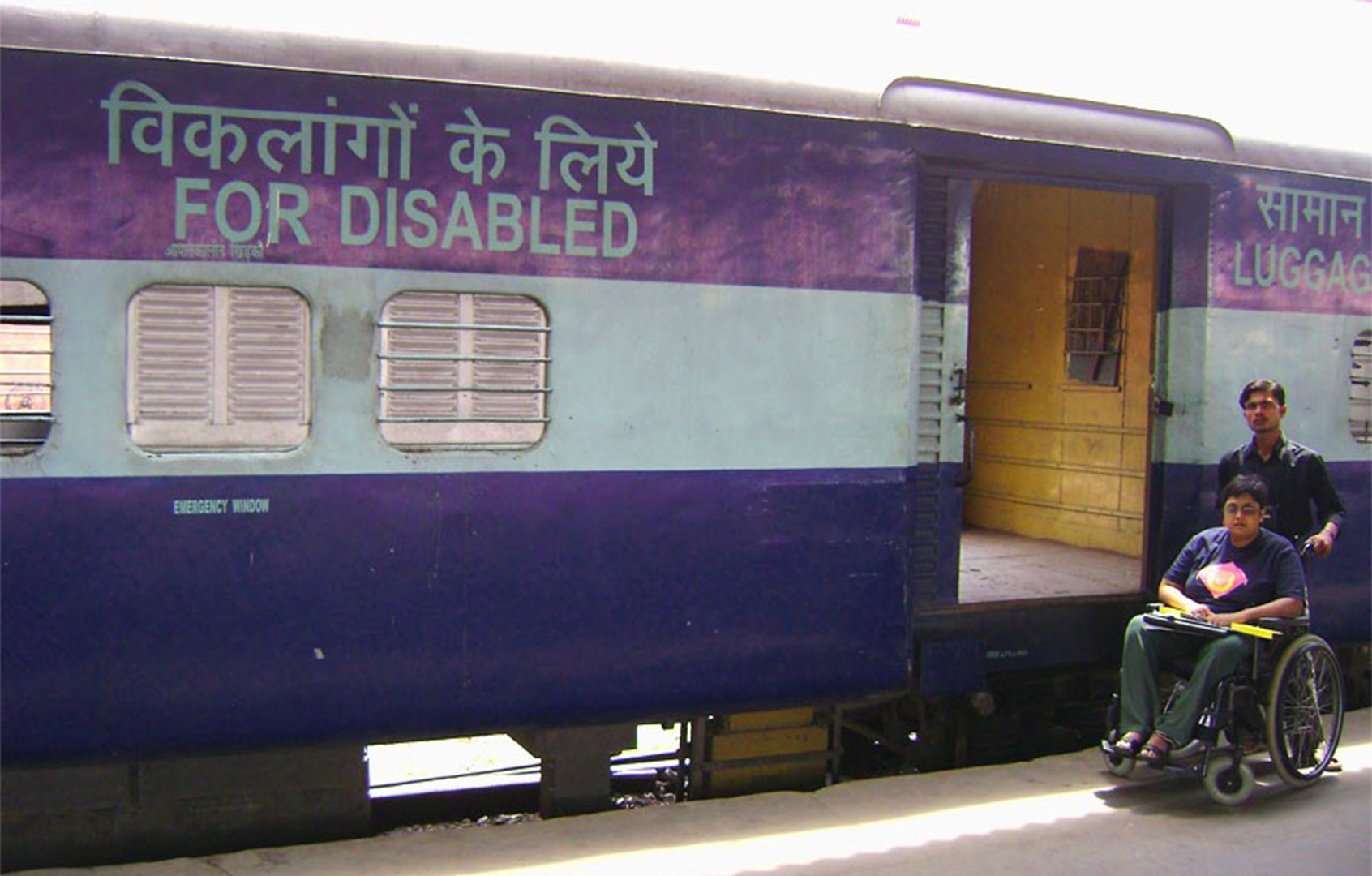F*ck Exclusive? Design Inclusive!
Designing digital products for inclusivity, doesn’t have to be a compromise on creativity. You can be exclusive in creation and inclusive in execution.
Swati Paranjpe
I, like most Indians, who have lived and or travelled in the west, have always been fascinated by the care given to the needs of people with disabilities. Whether at restaurants, public amenities or private companies, inclusivity in design is being expanded to cover the full range of human diversity. The sensitivity of those who make the effort, from organisations to governments, communities and designers, is a relentless commitment that should be embraced in India.
 Credit @ accessability-india.blogspot.in
Credit @ accessability-india.blogspot.inInclusive design is an evolved conversation globally, but very nascent locally. In not only designing our physical spaces, but also our digital products. With the aim to empower as many and create equity of access. And neither has to be at the expense of creativity, as is the norm.
“As a graphic designer, it’s rare to get a brief in India that centres around inclusivity. But then, when the student is ready, the master appears.”
I have lived in Mumbai for almost 2 decades. As an art, history and culture glutton, I have explored every inch of Kala Ghoda (the art district of Mumbai) in the hours post college and work. However, my first visit to the CSMVS museum, now the crown jewel of the area, was in 2017. Previously, it never seemed inviting enough, but with a spurt of activity, from interesting international exhibits and reinterpretations of their existing collections, it eventually became a must see.
In 2019, CSMVS launched Mumbai’s first children’s museum. A modern, glass-walled structure in stark architectural contrast to the Museum’s Indo-Saracenic heritage building. Designed thoughtfully to include the indoors and outdoors, the space and its philosophy is geared towards engaging young minds through all their senses. But more than anything, it’s an inspiring endeavour that is likely to change India’s relationship with museums.
 The Child Friendly Toilet at CSMVS Children's Museum, Mumbai.
The Child Friendly Toilet at CSMVS Children's Museum, Mumbai.
“It was in the building’s child-friendly toilet, where I first noticed their thoughtfulness.”
It’s something that I had never seen before and was thoroughly excited to recommend to all those who appreciate compassionate spaces. Little did I know that this thoughtful space would become the hotbed of our studio’s long awaited initiation into inclusive design. The Children’s Museum commissioned us to create a unique digital experience for them.
Targeted especially towards children, adolescents and young adults, this digital experience will not be a mere child-friendly online museum. Instead it is imagined as an innovative medium of discovery. A space for young minds to explore, learn and grow into wholesome, curious individuals. Designed with the purpose of creating tech for good and repurposing art, history and culture to create insatiable curiosity amongst the young.
The museum was keen that we follow the latest (WCAG) Web Content Accessibility Guidelines. Globally this is a legal requirement for all public and private web projects. But in India, it seems to be a recommendation for the government sector and not necessarily a binding, either on them or the private sector.
Irrespective, we knew early on that we wouldn’t be able to drive the project by simply following the WCAG guidelines. To be truly inclusive, we would have to factor every challenge of diversity and craft a platform that could truly solve them. Even if it is incremental and designed in stages, with utmost care and caution.
Accessible design, universal design, barrier-free design are all interrelated concepts, subsets of inclusive design, with subtle distinctions. But they are allied with a common purpose to ensure that we design everything from the built environment to digital interfaces, with an eye for everyone. This requires a sensitivity to criterions of culture, diversity, disability, usability, language, age, gender and other forms of human needs and difference.
Every project is a chance to begin again. Earlier this year, we crafted the core ethos for our studio — at The House of Two,
“Branding lives at the intersection of Art and Design, to create and curate Brands and Experiences that are exclusive, uncompromising and above all timeless.”
Designing for Diversity, Indian or otherwise.
Choosing design elements for brands has always been a mélange of assimilating category codes, consumer psychology, brand personality and company beliefs, all assimilated together, to arrive at a design system that intuitively and collectively feels appropriate. This has been a standard process which then gets governed and altered as per the brand’s mediums (from print to digital). Mass market packaging or large corporations undertake focus group inputs and design decisions are then altered as per consumer feedback. But SME’s and cultural institutions usually do not have similar budgets; most often it’s the client and the designers who take a final call. We started our process pretty much in this manner.
Typically, digital design projects factor in user data for experience parameters and not necessarily the visual elements. We always start such projects with the UX/UI and Identity being developed alongside each other.
Considering the wide range of potential users, both in terms of age, as well as socio-economic status, our user data and corresponding insights took over 3 months to cull out and compile. The first unique challenge we faced was understanding the role that cognitive development plays when crafting such a platform for children between the ages of 5 and 23. Our understanding, based on initial research, was enhanced and refined through conversations with psychologists, teachers, parents and the children themselves.
“Through the course of this activity we came to the realisation that we would have to build multiple user journeys for each age category based on cognitive ability.”
These journeys were also classified based on how they would be led. Either aided, independent and/or peer led. While by and large, with all natural factors remaining equal, most children develop at the same rate, access to information and education can cause a difference in development. This was further compounded by the various people with disabilities that we would have to design for within these groups.
As a pilot phase, we decided to focus on 3 core areas of inclusivity:
Ages 10–15 for the economically abled and 13–18 for the economically fragile.
Individuals with various forms of visual disabilities
Children with varying first languages, who decipher english in their own unique ways
In the meantime, we’d already started arriving at the platform’s identity with its logo, colour and font palette being the core design elements. But the minute we put them through the lens of our research, insights and accessibility criterion, we had to re-craft the complete design system.
“In the process, we have now altered our process of creation to design effectively for diversity. While ensuring that the design aesthetic, rich storytelling, delight of colours, form and interactivity isn’t compromised for any of the platform’s users.”
Over the next few weeks, we hope to collate our learnings across each design area. As you join us on this journey we hope you too will begin to consider inclusivity more proactively, in the knowledge that it doesn’t have to come at the cost of creativity.

Let’s start a conversation.
For business enquiries:
eamonn@twodesign.co.in+91 98676 54952

